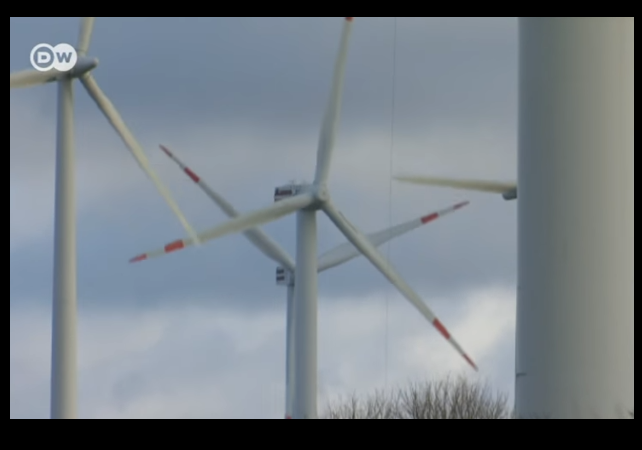12-Day Wind Drought Has German Utility Executives on Edge

Energiewende, or “energy transition” in English, is Germany’s comprehensive plan to transform its energy system towards a low-carbon, nuclear-free economy. This green-fever-dream includes significantly increasing the share of renewable energy sources while phasing out nuclear power and reducing reliance on fossil fuels.
For years, the Germans have religious implemented energiewende. They have been so efficient that wind energy has become the largest source of electricity at 27.2%, overtaking coal at 26.8%.
However, in their rush to achieve “net-zero”, the Germans forgot another of their words: Dunkelflaute (wind drought…literally “dark calm”).
Dunkelflaute typically occurs during winter months, particularly in November, December, and January. And it appears that the projection is for slowing wind speeds over the next few decades, too.
During these periods, wind turbines and solar panels produce little or no energy. Germany has tried various kinds of battery storage to get through the annual dunkelflaute, but the only thing that has really bailed out their power grid is nuclear, and burning more coal and natural gasGermany and Northern Europe have been experiencing a variation of dunkelflaute, called “wind droughts,” for the last few years, with wind speeds falling 15% or more in many regions. This has been a gradual trend since 1978. The projections for wind drought continue to get worse. Even the IPCC is forecasting slowing winds for the coming decades, saying average annual wind speeds could drop by up to 10% by 2100.
A single event usually lasts up to 24 hours, with 2-10 events occurring per year, totaling 50 to 150 hours annually.
Now a 12-day dunkelflaute that began in early November has German energy executives deeply concerned.
Here is a link to a post that contains the original German version of the LinkedIn plea.
These executives have plenty of reasons to be worried. In 2021, there was a lengthy dunkelflaute in Northern Europe and energy utility profits plummeted.
The 2021 “wind drought” hit Northern Europe particularly hard, especially those countries relying most on wind energy — notably Denmark, which gets 44% of its energy from wind, and Ireland, where the share of wind in total energy production is 31%. Other European countries relying heavily on wind include Portugal (26%), Spain (24%), Germany (23%), the UK (22%), and Sweden (19%). In France, which gets most of its power from nuclear, it’s just 8%.As a result of the reduction in average wind speed, Danish energy company Ørsted reported a loss of €380 ($366) million. German energy company RWE acknowledged a 38% drop in profits last year, although this was from both its wind and solar units combined.
And while executives worrying about profits is understandable, likely average Germans are worried about simpler things….such has having light and warmth during a major snowstorm.
There are reports that southern Germany is currently experiencing a major winter storm with heavy snowfall. Up to 40cm (15 inches for us Americans) of snow has fallen in parts of Bavaria and Baden-Württemberg. The storm is expected to continue into the weekend, with snow drifts and permafrost predicted in higher-altitude regions of Bavaria and Baden-Württemberg.
The Global Burden of Disease study attributed 1.9 million deaths globally to non-optimal temperatures in 2021, with cold-related deaths being about four times higher than heat-related ones. If there is not access to light and heat, the conditions for humans becomes suboptimal. So, a wind drought in November is a cause for serious concern on the part of the average German.
There is another group that is likely to be very worried: The German Green Party.
In Germany, the coalition ofthe Social Democratic Party (SPD), the Greens, and the Free Democrats (FDP) disintegrated the day after the American presidential election, primarily due to internal conflicts and dissatisfaction with governance. New elections are slated for February 2025.
Energy expert Robert Bryce offered his analysis of the German developments:
In a result that should surprise no sensible person, the German Green Party is now polling behind a number of other parties at 12%. Extended wind droughts and regional winter storms can reduce those number even farther.
There are currently two energy sources that are cost-effective and readily available at a civilization-worthy level: Nuclear and fossil fuels. Energy executives may wish to consider a new approach: Energieweisheit (energy wisdom). There will be less drought and more profits that way.
CLICK HERE FOR FULL VERSION OF THIS STORY